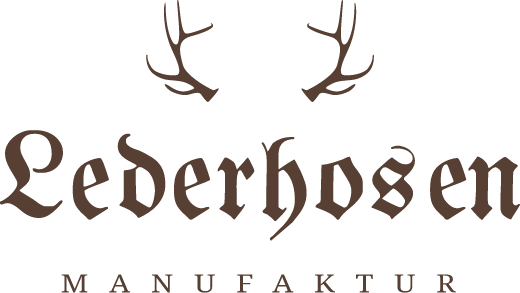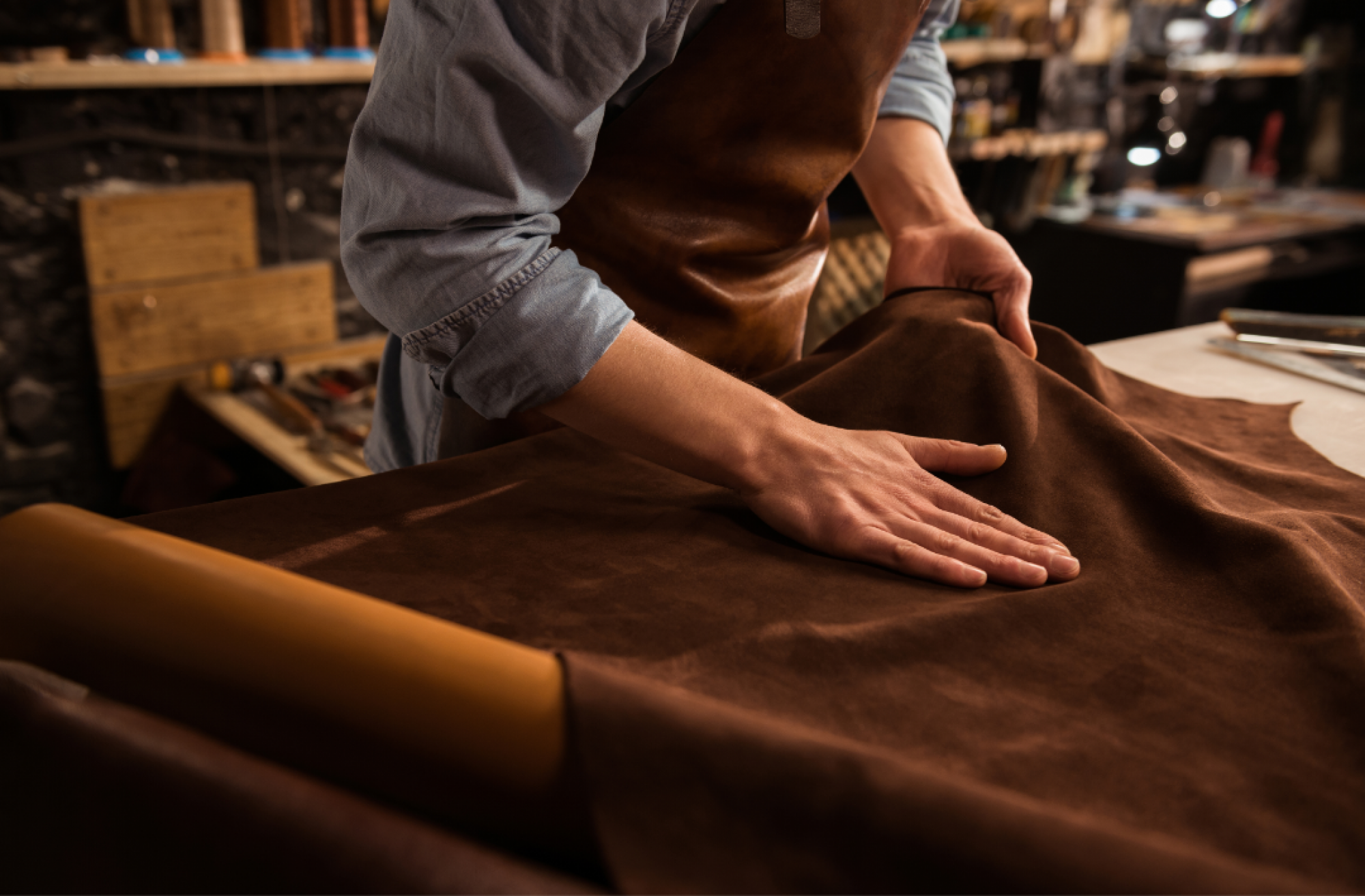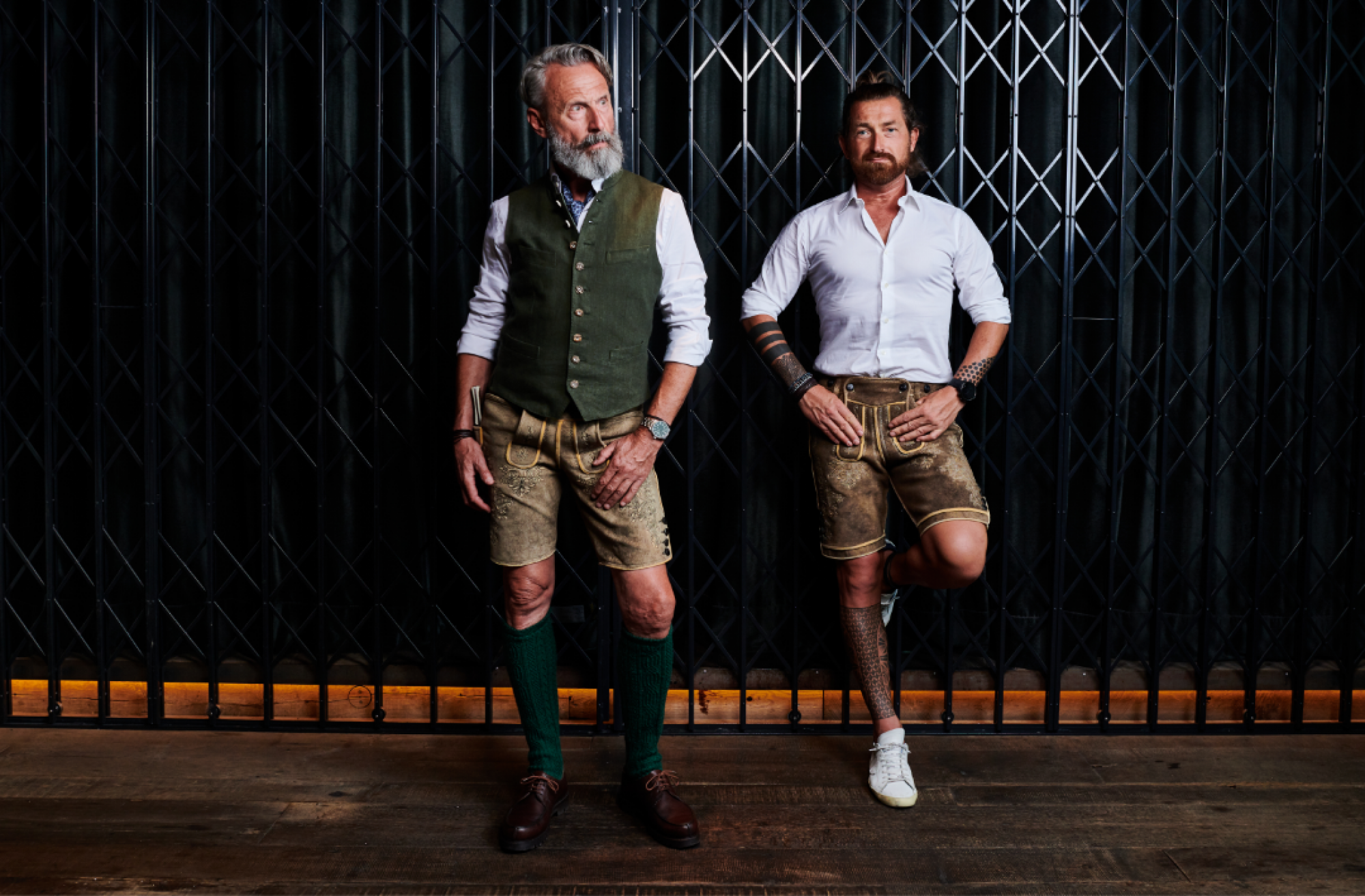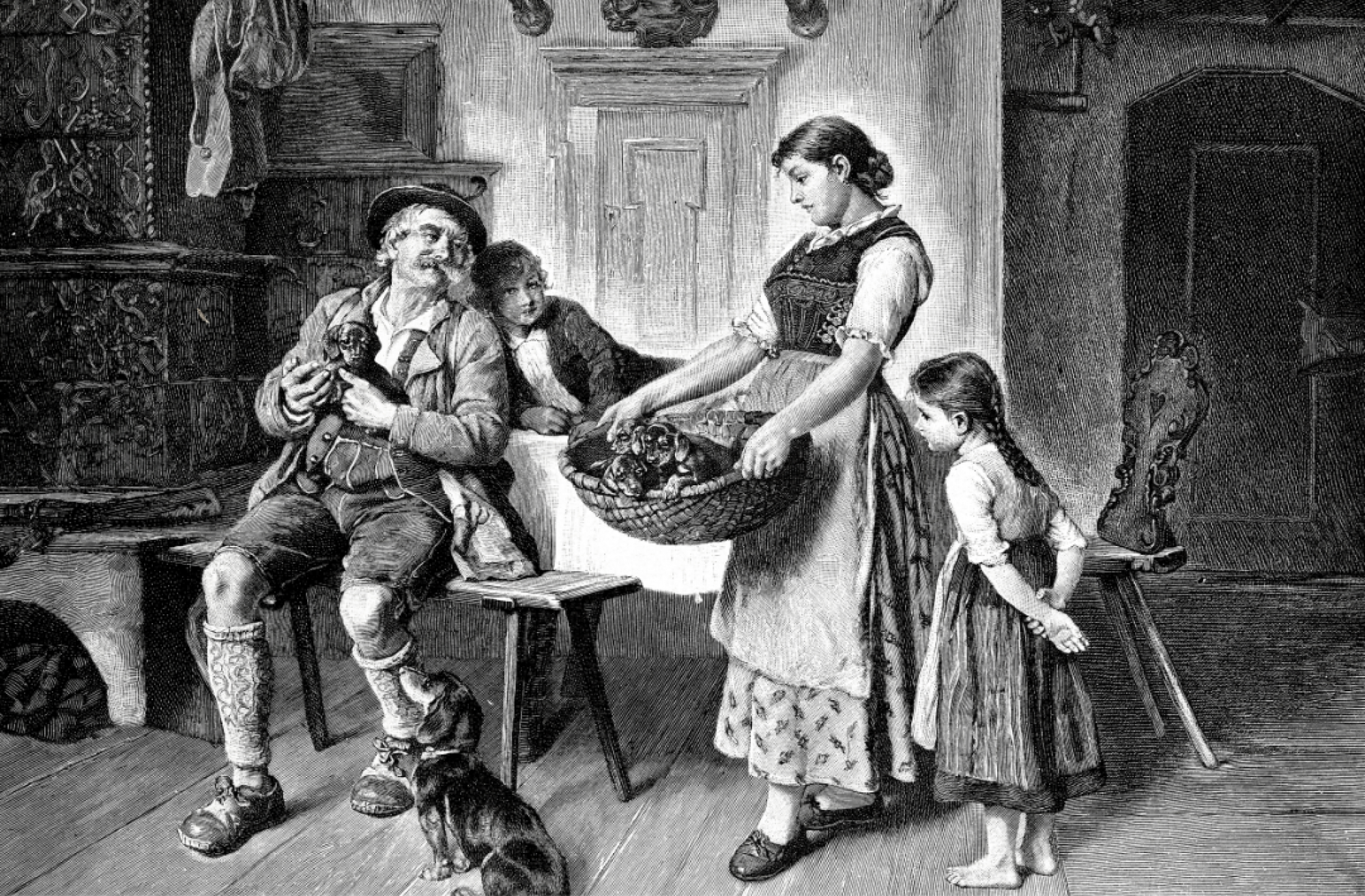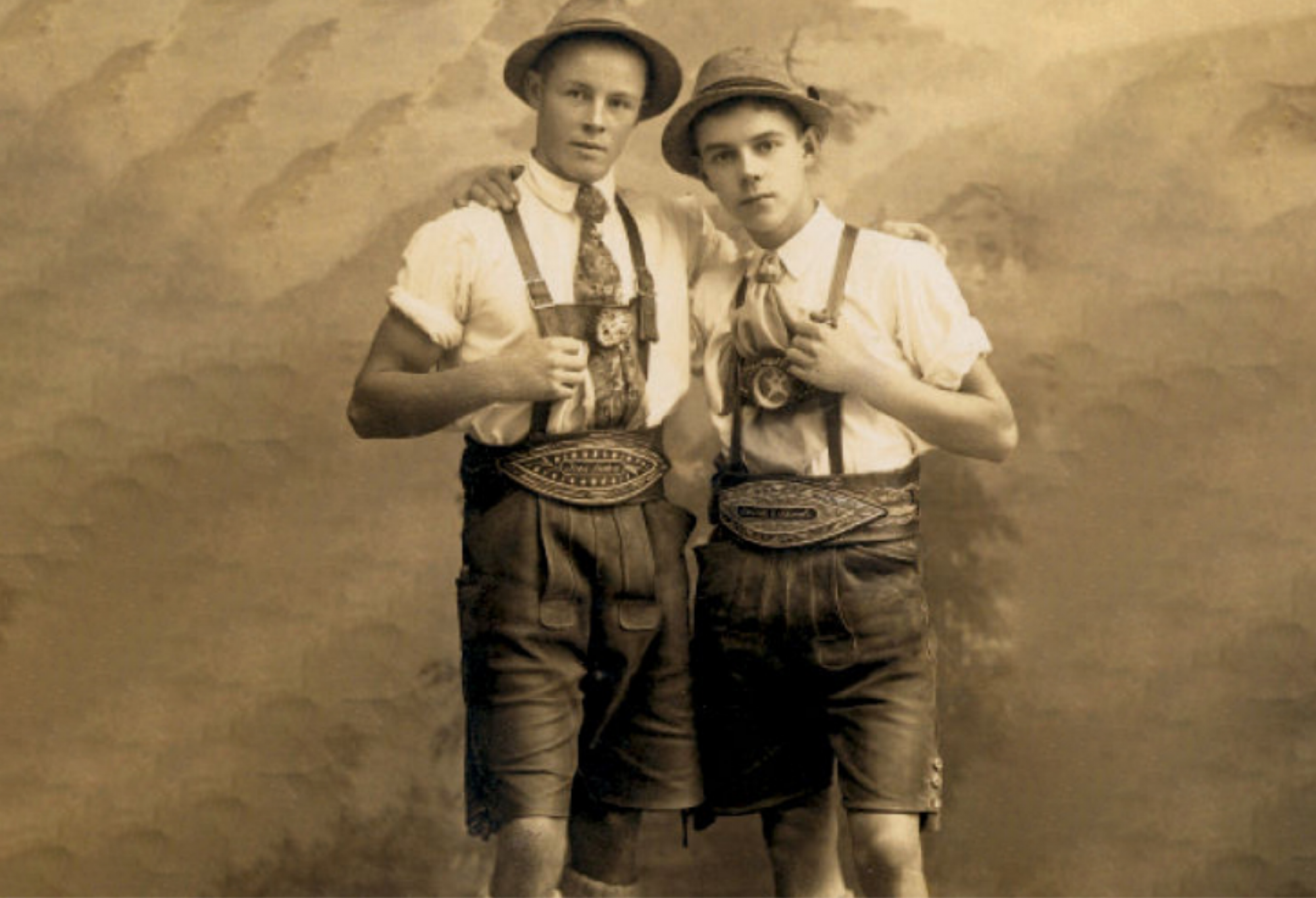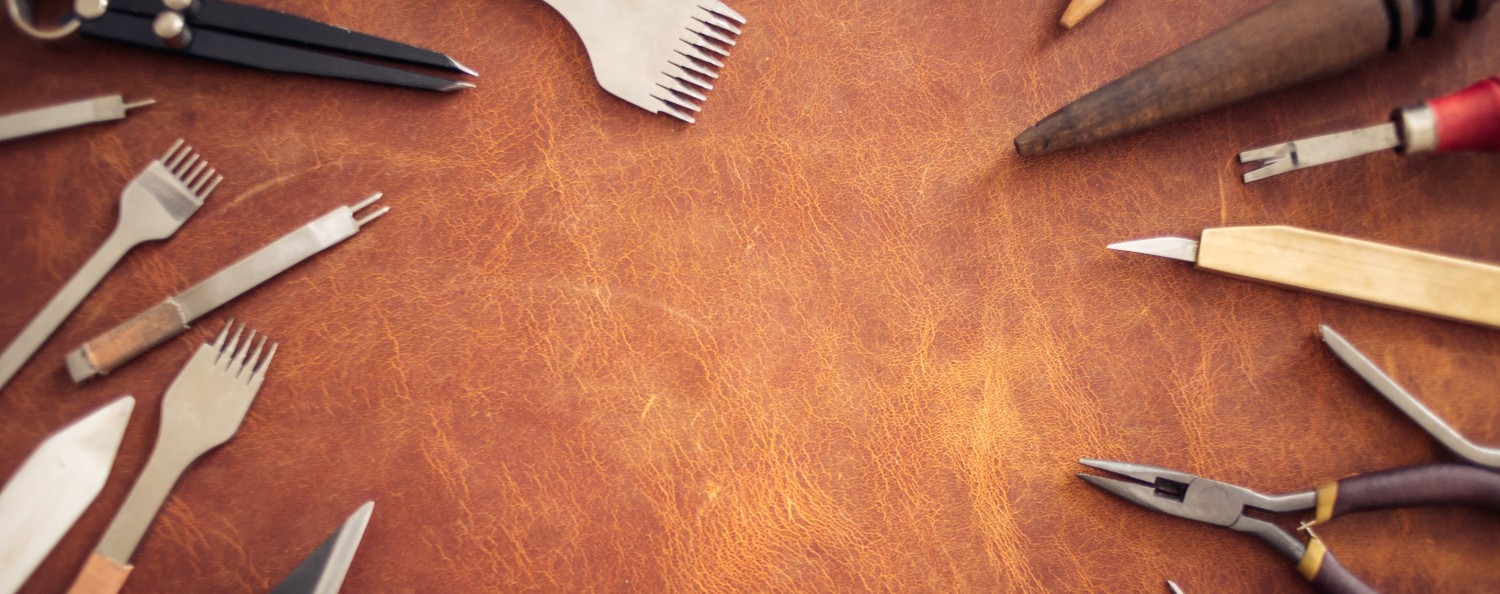
How Lederhosen are made
The best deerskin worked to the highest of qualities
Our Lederhosen are made from particularly high-quality deerskin that’s sourced from New Zealand and the Alps.
Further processing takes place at our tannery in Eferding. The chamois-tanning process makes the leather particularly soft, breathable and easy to wash. Lederhosen also develop a temperature-regulating effect so that they’re in season all year round.
No industrially produced trousers can keep up: chamois-tanned suede is considered the finest of all leathers.
The buffalo-horn buttons for our Lederhosen are made by Horndrechslerei Kremsmünster, the staghorn buttons are sourced from Styria.
Every one of our Lederhosen is handmade to the highest of standards and is therefore unique.
Our online configurator will help make your Lederhosen unique to you: every click of the mouse will make your Lederhosen special – from the type of leather right up to the buttons and embroidering. Because everyone thinks differently about traditions and wants their own Lederhosen to meet their own specific demands. And once you’ve found your love for Lederhosen, it will stay with you forever. Because a good pair of Lederhosen will last a lifetime.
History
The history of Lederhosen
When you wear Lederhosen, that also means that you’re wearing a bit of history because they’re able to look back on a very long tradition. Ötzi was found wearing one – and that was more than 5,300 years ago.
But present-day Lederhosen designs have changed a little since the Neolithic. For the better, we think, and who knows: perhaps Ötzi would have been impressed with a couple of braces and an embroidered drop flap on his.
The short Lederhosen with the cut that we’re familiar with today became popular as practical and robust working trousers for both men and women in rural Alpine regions during the 18th century.
The garment finally found acceptance in more elevated spheres when royals and aristocrats started wearing them: many members of the Habsburg and Wittelsbach families took to wearing traditional dress and Franzl even probably brought the odd kill home from the hunt to the imperial kitchen in his Lederhosen that Sissi had hand-embroidered for him.
Lederhosen were finally declared a cultural asset when they became popular with the many Austrian and Bavarian traditional dress associations that came into being during the 19th century. Lederhosen have since been seen as the epitome of down-to-earthness and the bond with one’s routes and a must-have for all strapping boys and girls.
Because what, if not Lederhosen, could be both appropriate for a Beerfest and an audience with royals?
CREATE YOUR LEDERHOSEN
Configure your unique Lederhosen in just a few clicks now

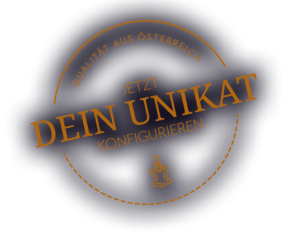
CONTACT
ANY QUESTIONS?
When you shout into the forest, it resounds out: We are happy to help and also welcome praise and criticism.
